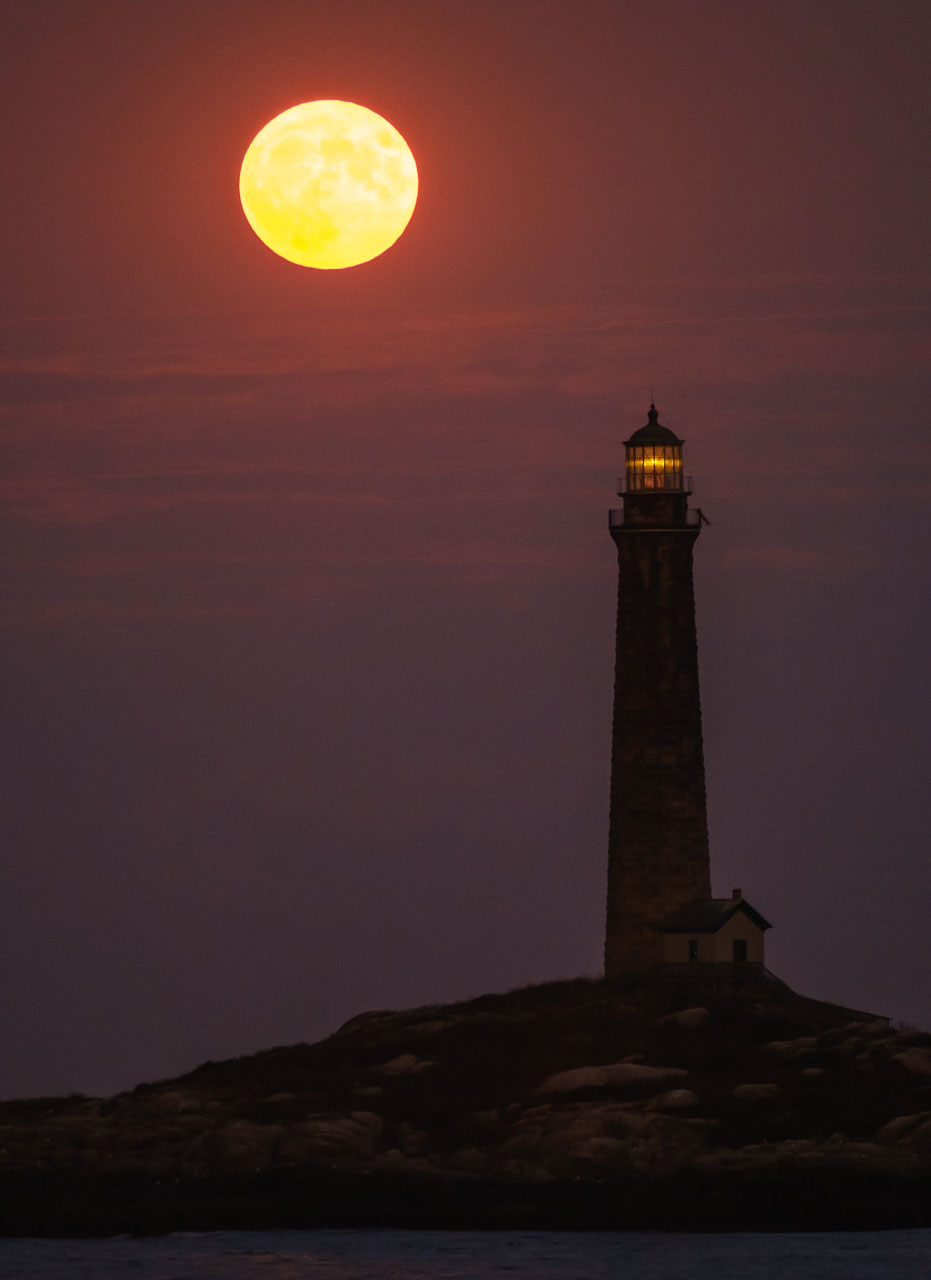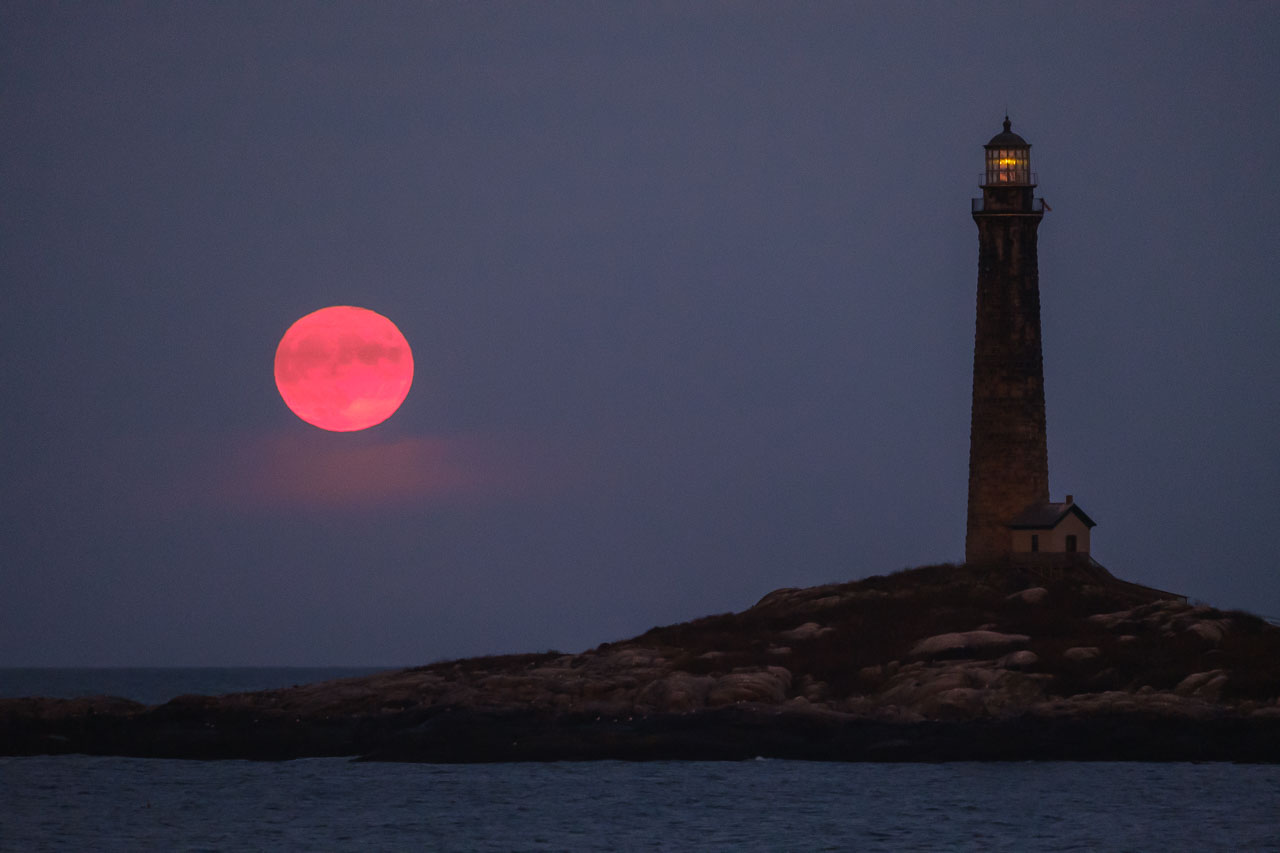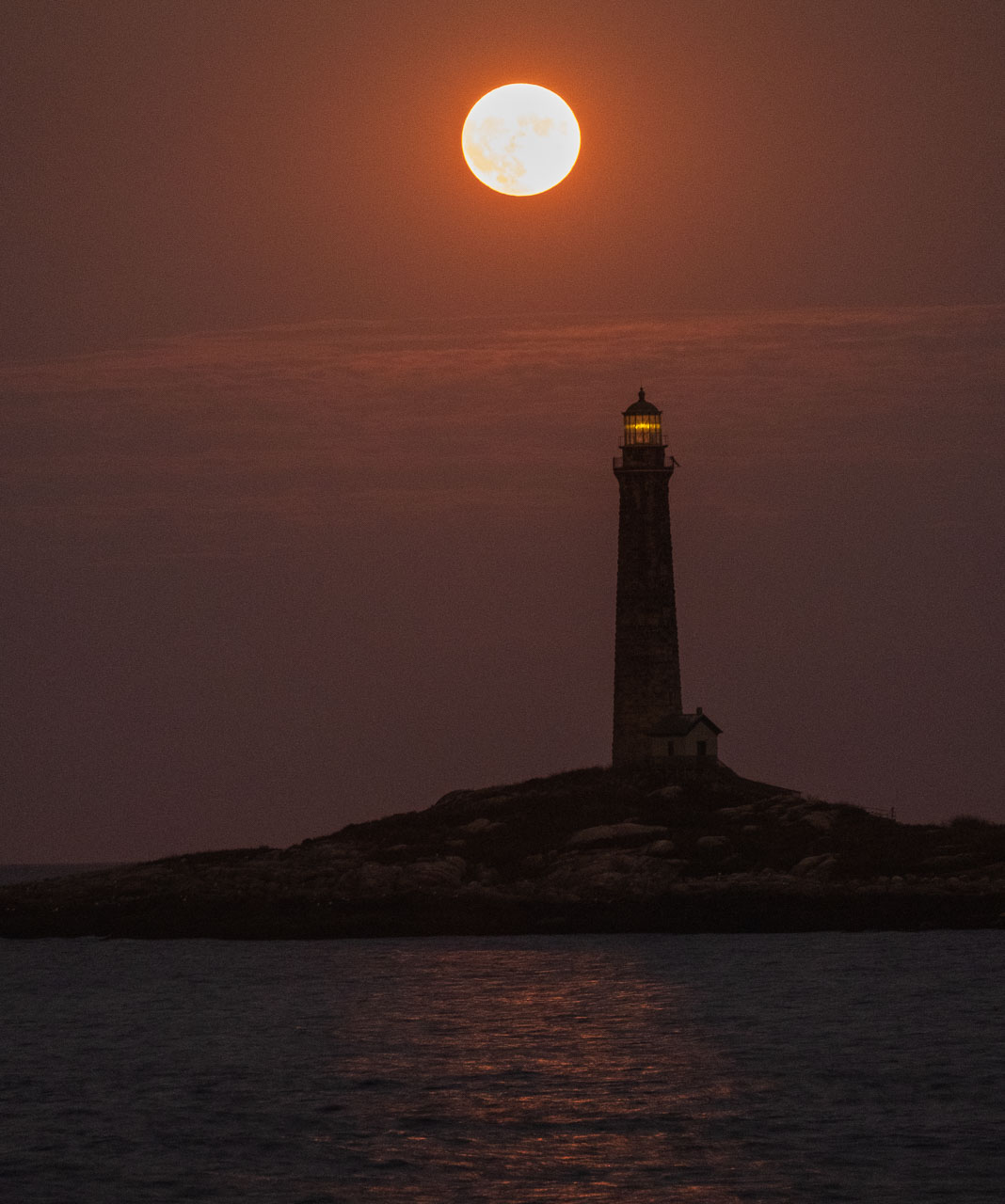
Challenging long telephoto lens photography can be a deal breaker with landscape photography. Imagine if you will, walking out to a rocky out cropping to make a photo of a moon rising next to a light house at a half hour before sunset with the wind blowing 20+ mph. The thoughts going through my head went something like this. How the heck am I going to keep this lens steady with it blowing as hard as it is IN THE DARK!
Well this is a story of how I did this. A friend of mine was already standing next to his tripod contemplating the same issues at the highest point above the water as I approached. When I got there I suggested that we move lower down to minimize the wind. We found a more sheltered spot and indeed it helped, a little. The next step was to lower my tripod even lower and hang my camera bag underneath the head of the tripod and immediately things started to settle down. I was shooting with the Fuji X-T3 and the XF 100-400 and had the OIS on the lens turned off. Now thinking back, if there is movement, why not keep the OIS on and set the camera IS setting to shooting only. This might very well have solved the motion problem altogether! I will have to keep this in mind.

The solution to challenging long telephoto lens photography
So the challenge was keeping the camera and lens steady at ridiculous shutter speeds while keeping the ISO as low as possible, in the dark. This is not easy! With the electronic marvels we have in the camera field now a days, I could have done some electronic hocus pocus like make a shot of the north tower when it was quite bright out and merged the shot of the moon in later. But in my view that is CHEATING! So I chose to go with a high ISO and take my chances with the slow shutter speed with a giant lens. In full frame terms well over 400mm. So I used my electronic cable release and put my hand on the top of the lens and pushed down lightly which helped to alleviate the movement caused by the long lens and the wind. With the shutter speeds approaching a half a second this is tricky business. But the Fuji gear responded marvelously. The images I got were outstanding.

As the time got closer and closer to 7:00PM I experimented with taking my hand off the camera at the shutter speed at .5 sec because I was worried about too much shake and was surprised to see that the images were blurry when I did. So I put my hand back on the top of the lens for the last few shots as the moon started to light up the water and the fresnel lens in the north light.

So here is the prognosis. When shooting in lots of wind get down low and lower your tripod. Hang your camera bag under the tripod and use an electronic cable release. Using the 2 sec. timer is a problem as you can’t time the wind gusts. Finally, because you are using a veeery long lens any movement creates a problem at slow shutter speeds so use the highest shutter speed you can. I used my hand on top of the lens to calm things down a bit which seemed to help. One last thing, use a very heavy tripod in these conditions!!! A small travel tripod is almost useless. My carbon fiber smaller tripod was too small I needed to bring out my aluminum Gitzo for this shot and I didn’t a big mistake. By keeping these techniques in mind for challenging long telephoto lens photography your next outing can be made much better.
